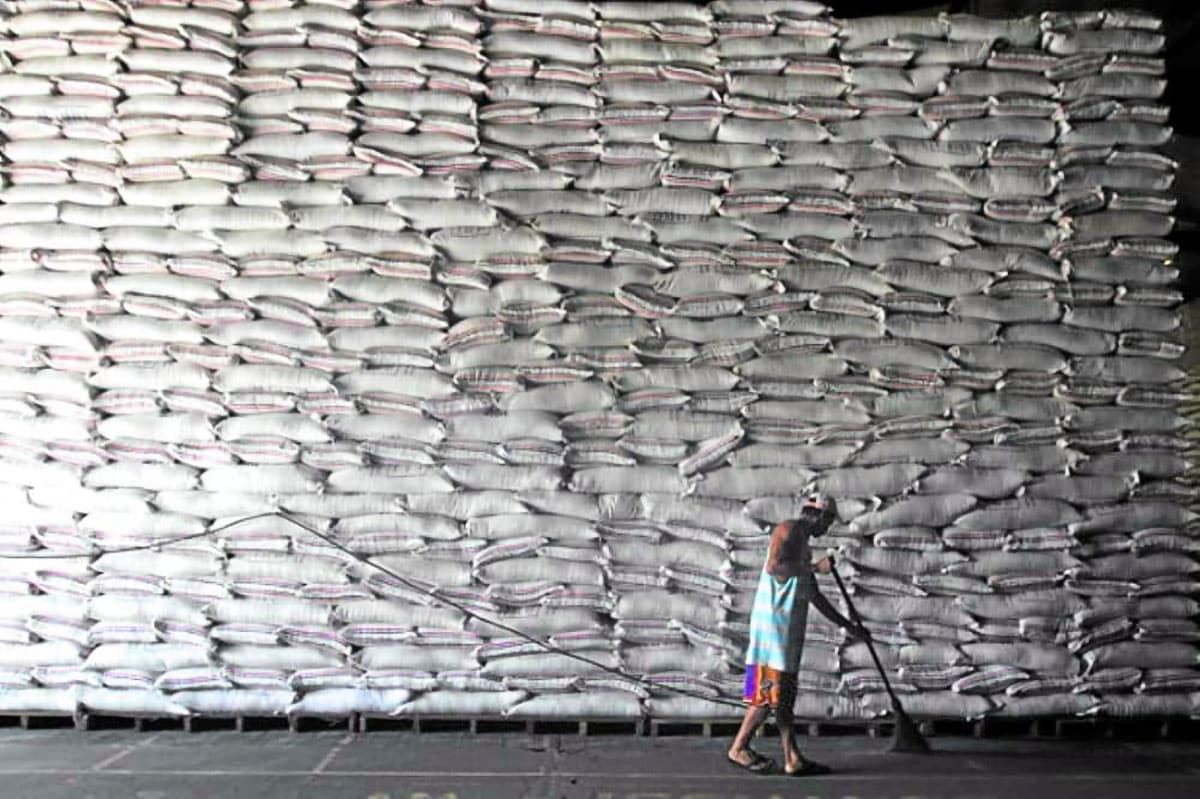
ANTI-INFLATION MOVE Under the program which will start next month, vulnerable sectors can purchase 10 kilos of rice at P29 each monthly from selected Kadiwa stores. —Inquirer file photo
MANILA, Philippines — The Department of Agriculture (DA) intends to import 363,697 metric tons (MT) of rice to support a government program to sell ageing rice that is still of good quality to vulnerable sectors at a subsidized price of P29 starting in July.
The “aging” rice stocks to be sold are those that have been in storage or warehouses for three to six months, the DA said in a statement on Wednesday. However, these will undergo laboratory tests to determine whether they are fit for human consumption.
Uncooked rice has a shelf life of up to two years, depending on its processing, and the National Food Administration (NFA) has been selling ageing rice stocks for years without issue,, although there have also been complaints of poor quality.
READ: NFA to keep building up rice buffer stock
In an interview, Agriculture Assistant Secretary and DA spokesperson Arnel de Mesa said the agency could import the rice under President Marcos’s authority, but he did not specify whether the transaction would be done via government-to-government arrangements.
“There are two approaches: first, if certain provisions of the RTL (Rice Tariffication Law) will be amended and second, if an executive order will be issued allowing the DA to do this (import rice) under the Price Act. We’re allowed to do so,” he said.
De Mesa explained that the importation was meant to replenish the country’s buffer stock, which was expected to diminish with the implementation of the NFA’s “Bigas 29” program.
“This program primarily aims to provide rice at an affordable price of P29 per kilo [to] the vulnerable sectors of society,” Agriculture Sec. Francisco Tiu Laurel Jr. said that after the NFA Council, which he chairs, the program was approved on Wednesday.
Target beneficiaries
De Mesa earlier said that Bigas 29 was originally meant to be implemented in August. However, it was apparently moved forward because the government campaigned against inflation. The program’s targeted beneficiaries are persons with disabilities, solo parents, senior citizens and indigenous people, numbering about 6.9 million households, or over 34 million Filipinos.
Each household will be allowed to purchase 10 kilograms a month in select Kadiwa stores.
“A dry run of the cheaper rice program is already underway in select Kadiwa centers, and has been well-received by potential beneficiaries,” the DA said.
But it conceded that the selling price of P29 would be higher than the previous price of P25 per kg because the government decided to moderate the subsidy cost.
With each beneficiary household entitled to purchase 10 kg monthly, the program would require 69,000 MT monthly.
Thus, the DA said it needs to import 363,697 MT of rice to augment national buffer stocks, while the NFA would procure 559,535 MT of palay from local farmers, as required by law.
Social cost
Tiu Laurel said that, given the monthly target volume, procurement cost, and selling price, the program would incur a monthly social cost between P1.39 billion and P1.53 billion.
Under the law, the President may source rice from abroad at a lower applied tariff rate to address any imminent or forecasted shortage. The importation will be allowed for a limited period or a specified volume.
The RTL only allows private traders and importers to purchase imported rice, while the NFA’s mandate is limited to maintaining a buffer stock equivalent to at least 19 days of consumption or 330,000 MT.
“The estimated cost of securing rice buffer stocks to cover 19 days of national consumption is at least P28.39 billion,” the DA said.
The NFA’s buying price ranges from P23 to P30 per kg for clean and dry palay and P17 to P23 per kg for fresh and wet varieties.
The agency’s effective buying price differs per province and is adjusted and approved weekly based on the prevailing ex-farm prices and other factors.